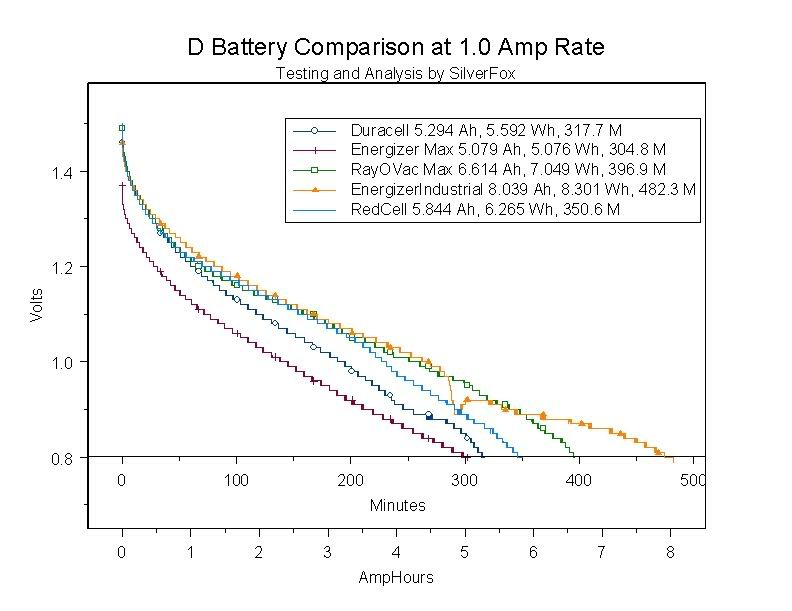wildstar87
Enlightened
- Joined
- Nov 12, 2007
- Messages
- 369
So I'm in a bit of a bind here.. Apparently the 4D Mag Mod I'm trying to do is getting a bit more complicated on the driver front than I initially anticipated.
I was hoping to have a setup that could take both Alkalines or Ni-MH, but it looks like I might have to choose one or the other based on the drivers that are available.
For a bit of background, I'm trying to run a single Cree XRE Q5 at 1000ma, using 4D batteries.
I've been told that the AMC7135 drivers sold by KD/DX will get too hot to run at 6v, so that makes the Alkalines a problem, but since Ni-MH would run 4.8v I think that would be ok.
George of TaskLED says that the CC5W driver, would probably be marginal with 6V Alkalines, but 4.8v Ni-MH wouldn't work.
The Luxdrive BuckPuck, has even less of a minimum voltage working range, 5V is the minimum, and would probably hit that pretty quickly with Alkalines, and of course 4.8v Ni-MH is completely out.
SOB 1000 from Sandwich Shoppe look viable, but I've heard reports of issues with the boards from here being reliable. It's also the priciest option of them all.
So given this, it almost seems like I'm better off just using a resistor (though not sure it would drive 1000ma) for simplicity, but then again the issues is batteries, I would like to be able to be flexible in my selection. I thought the 4D would give me plenty of headroom to work with, but it seems that I was wrong about that on the driver front. It seems like it's too high to use a boost, too low to use a buck.
I would like to stay with the 4D setup, so looking for some advice on this... :shrug:
I was hoping to have a setup that could take both Alkalines or Ni-MH, but it looks like I might have to choose one or the other based on the drivers that are available.
For a bit of background, I'm trying to run a single Cree XRE Q5 at 1000ma, using 4D batteries.
I've been told that the AMC7135 drivers sold by KD/DX will get too hot to run at 6v, so that makes the Alkalines a problem, but since Ni-MH would run 4.8v I think that would be ok.
George of TaskLED says that the CC5W driver, would probably be marginal with 6V Alkalines, but 4.8v Ni-MH wouldn't work.
The Luxdrive BuckPuck, has even less of a minimum voltage working range, 5V is the minimum, and would probably hit that pretty quickly with Alkalines, and of course 4.8v Ni-MH is completely out.
SOB 1000 from Sandwich Shoppe look viable, but I've heard reports of issues with the boards from here being reliable. It's also the priciest option of them all.
So given this, it almost seems like I'm better off just using a resistor (though not sure it would drive 1000ma) for simplicity, but then again the issues is batteries, I would like to be able to be flexible in my selection. I thought the 4D would give me plenty of headroom to work with, but it seems that I was wrong about that on the driver front. It seems like it's too high to use a boost, too low to use a buck.
I would like to stay with the 4D setup, so looking for some advice on this... :shrug:


